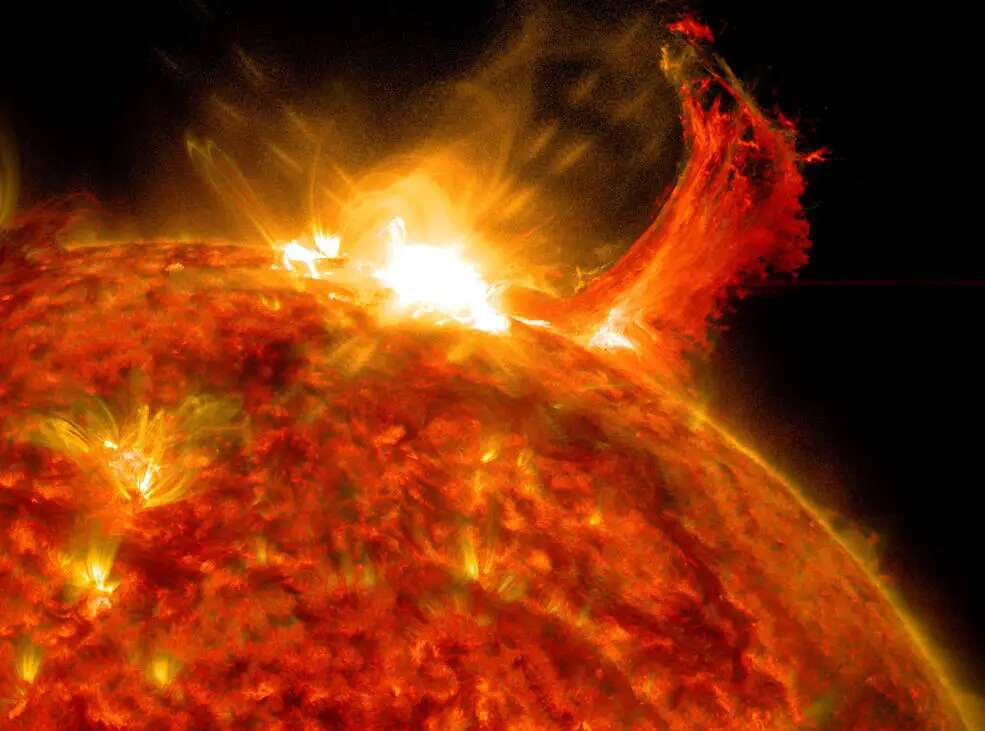
NASA and IBM have unveiled a new artificial intelligence model designed to predict solar activity with unprecedented accuracy. The system, called Surya, could provide earlier warnings of space weather events that disrupt satellites, communication systems, and power grids.
The model analyzes vast amounts of data from NASA’s Solar Dynamics Observatory (SDO), which has monitored the sun nonstop for the past 15 years. Surya processes this information faster than human experts and has already demonstrated the ability to forecast solar flares up to two hours beforehand.
Why solar prediction matters
Solar flares and coronal mass ejections can disable satellites, interfere with airline navigation, trigger large-scale power blackouts, and expose astronauts to dangerous radiation. Scientists say anticipating these events is becoming more critical as both space exploration and reliance on sensitive technology expand.
Predicting them is notoriously difficult. When a solar flare erupts, its light reaches Earth in just eight minutes, leaving researchers no visibility of what has already occurred. That gap makes forecasting in advance the only reliable way to protect infrastructure and human activity.
Inside the Surya model
The Surya system was trained on nine years of SDO data. It harmonizes multiple layers of information from two key instruments: the Atmospheric Imaging Assembly (AIA), which captures the solar corona in different wavelengths, and the Helioseismic and Magnetic Imager (HMI), which measures surface oscillations and magnetic fields.
With 360 million parameters, Surya can forecast solar dynamics, solar wind, and flare activity. It can also detect extreme ultraviolet spectra. Researchers said its architecture allows it to learn the physics behind solar evolution directly from data, often outperforming human-designed inputs.
In tests, the AI predicted whether an active region would produce a solar flare an hour before it happened. In some cases, guided by visual information, it achieved predictions within two hours. IBM stated the system showed a 16 percent improvement over current forecasting methods.
A step forward in AI research
Juan Bernabé-Moreno, director of IBM Research Europe for the UK and Ireland, described the partnership with NASA as a milestone. He said the effort to build foundation AI models for Earth science now extends to the sun itself. “With Surya, we have created the first foundation model to look the sun in the eye and forecast its moods,” he said.
Kathy Reeves, a solar physicist at the Harvard–Smithsonian Center for Astrophysics, not involved in the study, praised the approach. She noted that analyzing petabytes of solar data has been a slow and demanding process, but automation can now unlock much more of its potential.
Open access for scientists
The team released the Surya model as open-source on GitHub and Hugging Face. They also launched SuryaBench, a curated dataset and benchmark collection to help researchers study solar behavior. The findings were published on August 18 on the arXiv preprint server, although the study has not been peer-reviewed.

